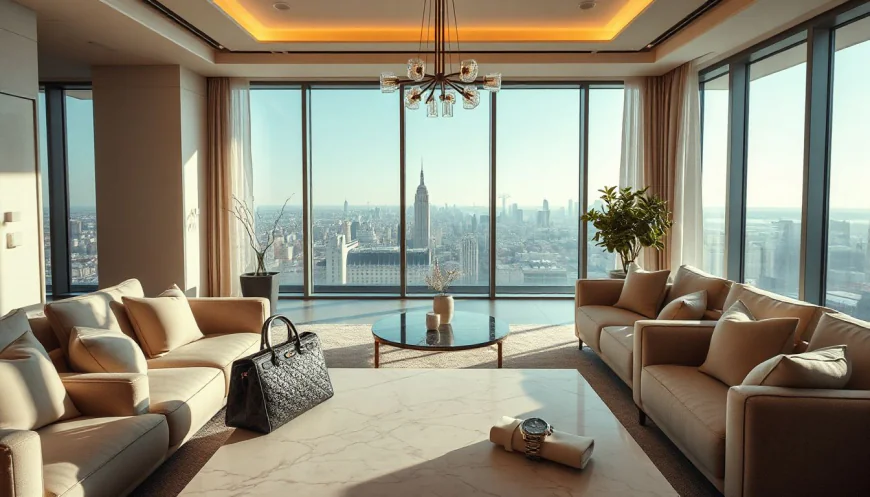The Rise of Quiet Luxury: Why Subtle Status Is the New Power Statement
You may have noticed something changing in the world of luxury. The flashy logos and bold designer pieces are giving way to a more understated style. More people want quality and elegance that don’t shout for attention. This shift is driven by a mix of cultural and social factors. Today’s consumers value authenticity, sustainability, and personal taste more than ever. They prefer high-end products that show class without showing off. Quiet luxury is now a way to express success while remaining discreet. It’s a reflection of modern values that prize genuine craftsmanship over hype.

The Evolution of Luxury: From Ostentation to Subtlety
Historical Perspective on Luxury Branding
In the past, luxury brands relied heavily on visible logos and exclusive labels. Think of flashy branding on handbags or watches that screamed wealth. These bold symbols built a sense of status easily recognized by others. That approach worked well for many years.
But over time, people began to look for more than just branding. They wanted products that felt special in a quiet way, not just because of a logo.
The Rise of Minimalism and Simplicity
Designers started embracing minimalism—clean lines, simple shapes, muted colors. This aesthetic became popular not only in fashion but also in home decor and accessories. Consumers now want pieces that last, not just trendy items that fade after a season.
Timeless, versatile items are preferable. They fit into a busy, modern lifestyle and don’t shout for attention. This trend pushes luxury brands to focus on quality craftsmanship, not just flash.
Cultural Shifts and Societal Values
Social media and celebrity culture play big roles in shaping how we see wealth. Today’s stars often wear understated outfits, showing elegance without excess.
People value privacy more than ever. Rather than flaunting wealth openly, many prefer to keep their success low-key. This change influences the whole luxury market toward discretion.
Characteristics of Quiet Luxury
Understated Design and Quality
Quiet luxury is all about craftsmanship and high-quality materials. Think of clothing with subtle details that only experts notice. The focus is on durability and finesse. Brands like The Row and Brunello Cucinelli embody this style with their simple yet luxurious designs.
Discretion Over Branding
Choice brands hide logos and avoid loud branding. Instead, they rely on the product’s quality to speak for itself. This makes items feel more authentic and exclusive. People who buy quiet luxury want high-end pieces that look timeless.
Personal Expression and Individuality
Quiet luxury isn’t just about status; it’s a way to show your personal style. Subtle accessories, muted tones, and classic shapes help express individuality. It’s about dressing in a way that feels right for you—not following every trend.
The Economic and Market Impact of Quiet Luxury
Consumer Demographics and Preferences
Many affluent Millennials and Gen Z followers are loving quiet luxury. They want to invest in pieces that last a long time and have real meaning. Data shows a rise in sales of discreet, high-quality products across luxury markets.
The Business Strategies of Luxury Brands
Top brands are adjusting to this trend by offering more subtle designs and storytelling. Instead of pushing volume, they focus on creating emotional connections through craftsmanship and heritage. Brands are now emphasizing exclusivity over mass appeal.
Sustainability and Ethical Considerations
Quiet luxury aligns well with sustainability. Consumers prefer products that are ethically made with durable materials. This approach reduces waste and supports a fair supply chain. It’s a win-win for the planet and the buyer.
Cultural and Global Influences on Quiet Luxury
Western Trends and Influences
Hollywood celebrities and designers now champion subtle elegance. Think of icons like Gwyneth Paltrow or Daniel Craig. European luxury houses have long valued understated style, inspiring a global shift toward quiet luxury.
Asian Market and the Rise of Discreet Wealth
Asian consumers, especially in China and Japan, prefer modest displays of wealth. Cultural values around humility and respect for tradition influence these choices. Discreet luxury fits their style perfectly.
Cross-Cultural Adoption and Adaptation
Different parts of the world adopt quiet luxury in their own way. While western markets focus on minimalism, Asian markets emphasize humility. Still, the overall trend is clear: luxury is moving toward discreet sophistication everywhere.
Practical Tips for Embracing Quiet Luxury
Building a Capsule Wardrobe
Choose versatile, high-quality basics like a perfect cashmere sweater or classic leather shoes. Focus on items that can be worn for years. This helps create an effortless, sophisticated look.
Investing in Timeless Pieces
Prioritize craftsmanship and durability over fleeting trends. A well-made blazer or tailored trousers can last decades. These pieces never go out of style.
Choosing Brands and Accessories
Look for brands that emphasize quality over logos. Subtle jewelry, elegant watches, and simple bags deliver style without shouting. Think minimal, but impactful.
Incorporating Quiet Luxury into Everyday Life
Mix subtle pieces into your daily wardrobe. Wear a sleek blazer to work or easy accessories for a dinner out. The goal is to look polished without trying too hard.
Conclusion
Quiet luxury is more than a trend; it’s a new way to show success and personal taste. With its focus on quality, authenticity, and subtlety, it offers a meaningful alternative to flashy displays of wealth.
This approach is sustainable, timeless, and true to modern values. Embracing quiet luxury means investing in pieces that truly matter—those that tell your story without words. As the world shifts toward more genuine and mindful living, subtle sophistication is here to stay. It’s the new power statement everyone will admire.



 VARSHITHA
VARSHITHA